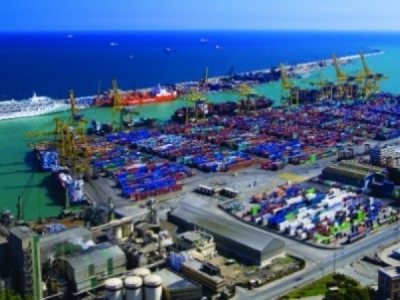
Posted on March 12, 2019
With the implementation of the IMO global sulphur cap just months away, the Port of Vancouver has committed to the effort to advance LNG as marine fuel by joining the multi-sector industry coalition SEALNG.
The Vancouver Fraser Port Authority (VFPA), the federal agency of the Port of Vancouver, is the fourth port to join the coalition and first in North America. Other members are the Port of Rotterdam, Yokohama-Kawasaki International Port Corporation and the Maritime and Port Authority of Singapore.
The British Columbia port’s desire to advance LNG as marine fuel makes sound environmental and business sense. The port is active in a number of efforts to reduce emissions at the port and in the region. Through its EcoAction programme, for example, the port rewards ships with lower harbour fees that utilise voluntary best practices to lower emissions and underwater noise.
LNG is also a growing business in the province. As the result of a booming shale gas business in British Columbia, 13 LNG export terminals have been proposed for the western Canadian province. VFPA is working closely with regional gas supplier Fortis BC, industry, academia and government to advance LNG bunkering in the Port of Vancouver.
“This partnership with SEALNG represents an opportunity for us to be part of a multi-sector group that is reducing marine shipping emissions and improving air quality,” said VFPA vice president, environment, community and government affairs Duncan Wilson.
SEALNG chairman Peter Keller, a long-time executive at Tote who recently retired from the US shipping company, said the organisation looks “forward to leveraging [the port’s[ expertise to realise our vision of developing LNG infrastructure in ports around the globe to enable quick, safe and cost-effective bunkering.”
LNG as marine fuel represents one of the options available to shipowners to comply with the global 0.5% sulphur cap, which comes into effect 1 January 2020. It is also seen as a pathway towards shipping’s decarbonisation as LNG emits no sulphur oxides and virtually no particulate matter, and compared to existing heavy marine fuel oils, emits 90% less nitrogen oxides.
There has been a strong uptake in LNG as marine fuel. The Port of Rotterdam reported that sales of LNG as a bunker fuel jumped more than six-fold from 1,500 tonnes in 2017 to 9,500 tonnes last year. Still, it represents just a small fraction of overall bunker fuel. During the same period, the port reported sales of bunker oil were 9.5M m3 tonnes.
One of the issues LNG must overcome is methane leakage in the supply chain. Methane, a potent greenhouse gas (GHG) that impacts climate change, is emitted during the production and transport of coal, natural gas and oil. Methane emissions also result from livestock and other agricultural practices and by the decay of organic waste in municipal solid waste landfills. It represents about 10% of GHG emitted into the atmosphere.
Representing a broad coalition across the LNG value supply chain, from class societies to ship brokers to engine manufacturers, SEALNG said that through best practices and appropriate technologies to minimise methane leakage, realistic reductions of GHG by 10-20% are achievable, with a potential for up to 25% or more as technology develops, compared with conventional oil-based fuels. LNG, in combination with efficiency measures being developed for new ships in response to IMO’s Energy Efficiency Design Index, will provide a way of meeting IMO’s target of a 40% decrease in GHG by 2030 for international shipping.
SEALNG is working with the Society of Gas as a Marine Fuel to study and develop tools to better understand the benefits of LNG from both an air quality and GHG mitigation perspective.
Source: lngworldshipping.com





